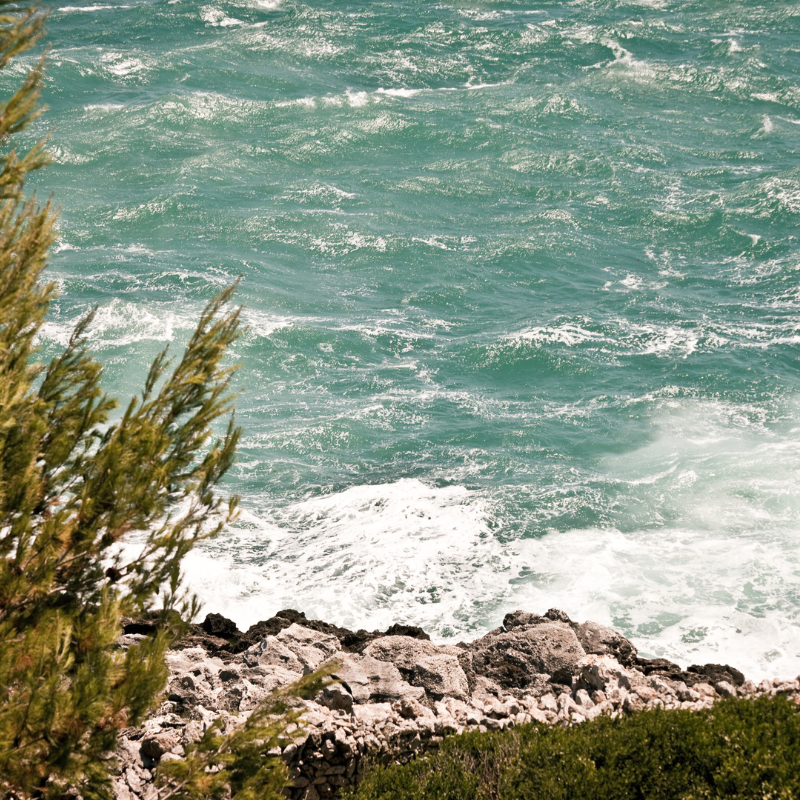TIPS FOR BOATING IN ROUGH WATER
Boaters should do their best to avoid being out on the water in rough weather. However, this is not always possible.
Even if you check the marine weather forecast (including tides and currents) before leaving the dock, sometimes, the weather can take an unexpected turn. A summer storm can quickly form and travel up to the coast, bringing strong winds and high waves.
This is why filing a float plan every time you go on a boat trip is crucial. The weather is unpredictable at sea - as we’ve seen before, the best weather models are accurate about 70-80% of the time. So every boater should be prepared to handle heavy weather and know what to do in case of emergency.
In this article, we give you some essential tips for boating in rough weather, so you can keep yourself, your crew, and your boat safe.
TIDY UP THE BOAT
As soon as the wind starts building, have a look around your boat: are there loose items and gear around? Anything that isn’t secured could go flying and either hurt a member of the crew or end up in the water. Scan the deck and cockpit first and tie down or put away every object that could be thrown around.
If you have a cabin, it’s worth tidying that up too, in case things get wet on deck and you need to take turns at the helm. The cabin will provide a dry and safe shelter for members of the crew to rest when they aren’t steering the boat.
STAY CALM
Try to keep calm, so you can handle the situation efficiently. Emergencies require a clear mind, so you can use your problem solving skills at their best. If you panic, refocus and take some deep breaths until you feel back in control.
KEEP A SHARP LOOKOUT
When the seas are higher, your visibility decreases. It’s harder to spot other vessels, buoys, or swimmers in the water. You’ll need to be extra vigilant in rough weather, so keep a sharp lookout by never taking your eyes off where you’re going and scanning the horizon at regular intervals.
CHECK THE RADAR
If you have a radar, it’s good practice to keep an eye on it often. The screen will display storms heading your way, so you can avoid them or prepare for them.
HAVE A GRAB BAG READY
If you haven’t prepared one already, get a floating grab bag and fill it with emergency items, such as a portable GPS, water, a phone, credit cards, and more. If you need to abandon your boat, you need to be ready to leave in seconds.
Do you have a life raft on board? Get it ready to go and make sure it’s tied to your vessel.
SLOW DOWN
While it might seem counterintuitive, slowing the boat down is the safest way to handle rough seas. It allows you to ride the waves, rather than slamming into them. You don’t want to go too slow, though - you need to be able to make progress. Go slow enough to keep your bow from plunging into the oncoming wave and fast enough to keep the crest from filling the cockpit.
TAKE WAVES AT AN ANGLE
Taking waves head-on is a bad idea, as you will end up in the trough of each one. Approach them at a 45 degree angle off the bow or stern, so you climb and fall off their sides. This will allow you to keep the prop in the water and maintain control.
AVOID GOING BEAM-ON TO THE WAVES
While taking waves head-on isn’t ideal, taking them beam-on is even worse - you risk rolling or capsizing, especially if the waves are very high or you’re in a small boat.
USE THE TRIM TABS CAREFULLY
If you have enough experience to use trim tabs, beware of using too much down tab - it can force the bow into the waves. No or little tabs allow the hull to plane as designed.
IF YOU CAN, ALTER COURSE
The first, natural reaction to bad weather is to head directly to the dock. Yet, this is not always the best decision. If going back to the marina means heading straight for the centre of the storm, don’t do it. Evaluate the situation and figure out which way is safest to go. You can always seek shelter in a big bay that’s protected from the wind and wait the rough weather out.
CARRY EXTRA FUEL
Your vessel will consume a lot more fuel in heavy seas, so it’s essential that you always leave the dock with more fuel than you need, in case the forecast isn’t correct.
KEEP AN EYE ON YOUR PROGRESS
On a boat trip, it’s important to keep track of your progress at all times. In rough weather, it becomes crucial, because it allows you to understand how your boat is behaving. Are you gaining mileage? What’s your speed over ground? Is there a current setting you off course? You’ll need to figure these things out in order to adjust your strategy.
WEAR A LIFE JACKET
You should always wear a life jacket while underway, even if you’re an experienced swimmer. If you’re not wearing one already, put it on as soon as the wind picks up. If you end up in the water, you’ll need all the help you can get to float.
KNOW YOUR BOAT
Taking the time to get to know your boat in different weather conditions will pay off in the long-term, as you will be able to understand if anything is off from the way she moves or how she sounds. Knowing your boat will give you a big advantage in rough weather, as you will instinctively know what to do in different situations.




